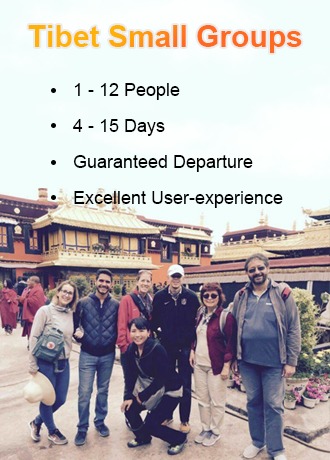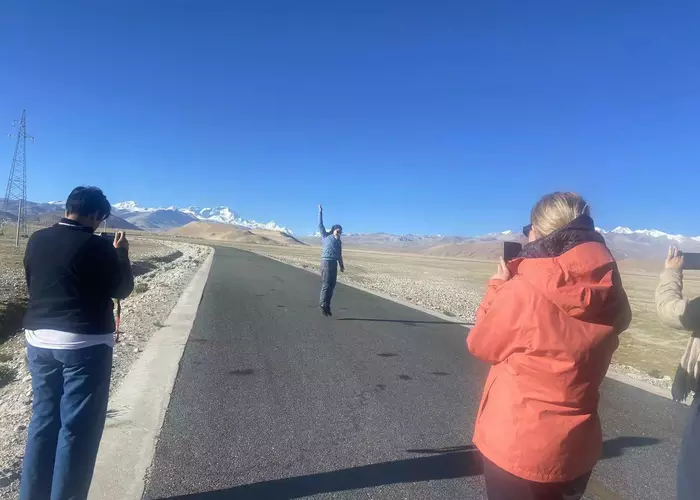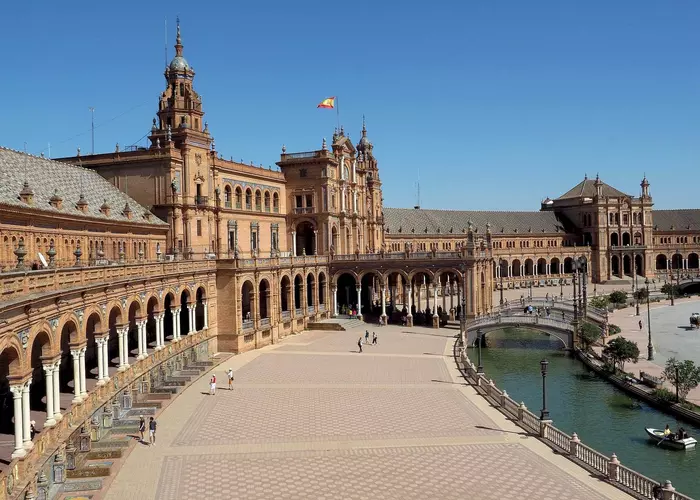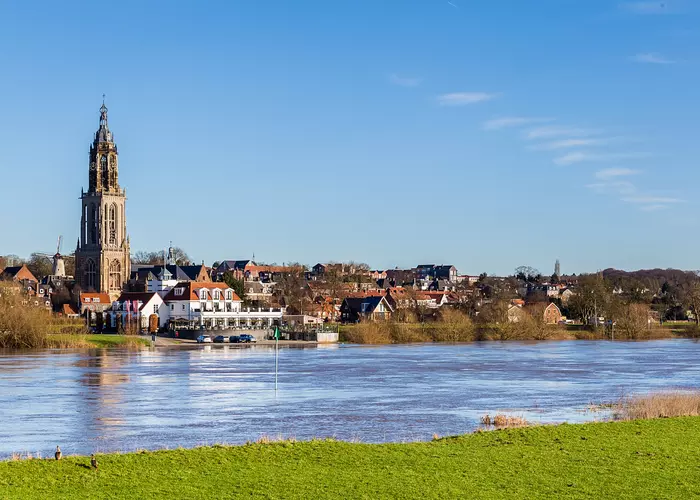Plan Your Mount Kailash Tour from Germany
- Emily
- Last Updated : 10/20/2025
Mount Kailash, located in Ngari Prefecture, western Tibet, is the main peak of the Gangdise Mountain Range. It is one of the four sacred mountains in Tibetan Buddhism and is also revered by Hinduism, Bon, and Jainism as the “Center of the World.”
A Kora (circumambulation or Parikrama) around Mount Kailash is about 52 kilometers long and usually takes 2 to 3 days to complete. Devotees of Hinduism, Buddhism, Jainism, and Bon believe that completing one circuit around the sacred mountain can purify one’s sins of this lifetime, while completing 108 koras can free one from the cycle of rebirth and lead to nirvana. At the foot of Mount Kailash lies Lake Manasarovar, whose crystal-clear waters are believed to wash away sins and bring wisdom and spiritual merit.
Travelling from Germany to Mount Kailash is no small feat — it means crossing thousands of kilometers, a few countries, and adjusting to the thin air of the high plateau. But for many Deutschen, this isn’t just a trip. It’s a journey that touches the soul, a chance to discover new cultures, and to feel a deep connection with one of the most sacred mountains on Earth.
Content Preview
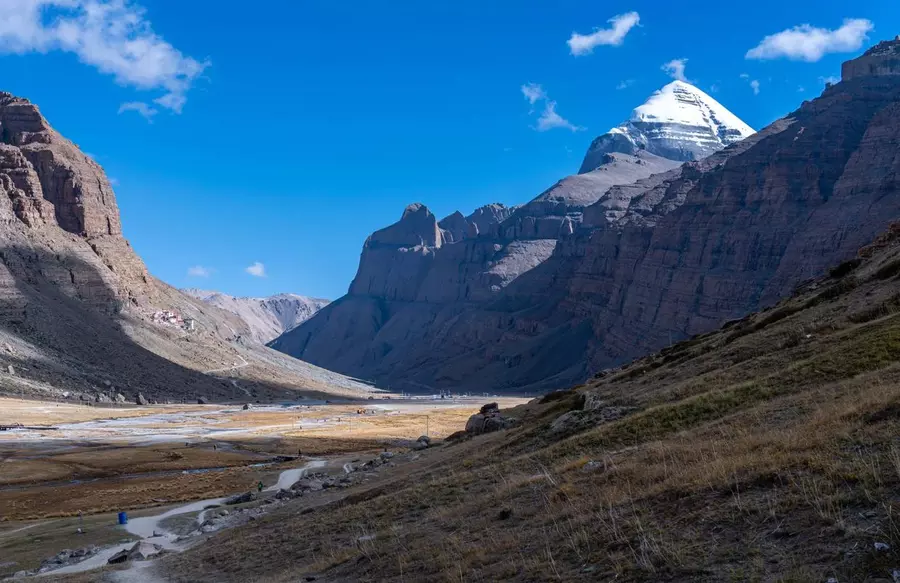
Why Deutschen Travel to Kailash
German scholars and explorers have long been fascinated by Mount Kailash. In the 20th century, German expeditions ventured into Tibet and the Himalayas, hoping to trace the origins of the Aryan people and even the legendary “Atlantis.” These journeys sparked lasting curiosity in Germany about Tibetan culture and the sacred mountain itself. Today, many German travelers are drawn to Kailash not only for its spiritual significance, but also for its stunning landscapes, high-altitude challenge, and the deep sense of peace found in the kora — the pilgrimage around the mountain that symbolizes purification and spiritual growth.
Travel Routes
The straight-line distance from Germany to Mount Kailash is about 6,080 kilometers. There are two main routes to reach Tibet: via mainland China or via Nepal.
Route A: Via China (Recommended)
From major German cities, travelers can fly to one of China’s gateway cities—Beijing, Chengdu or Shanghai. From there, you can either take a domestic flight or an iconic train ride to Lhasa, the capital of Tibet. After arriving in Lhasa, travel with your booked local travel agency and drive along the spectacular national highway G318 and G219 toward Darchen, the starting point of the Mount Kailash kora. The overland distance from Lhasa to Darchen is about 1,500 kilometers.
1. From Munich, Frankfurt, Berlin to Beijing
From Munich, Frankfurt, or Berlin, you can take a nonstop flight to Beijing Capital International Airport (PEK). A direct flight costs around €690–1000, while connecting flights via Doha, Abu Dhabi, or Cairo can be as low as €480.
After arriving in Beijing, you can fly to Lhasa Gonggar Airport (LXA) — the airfare is usually around €430. Alternatively, you can take a train from Beijing to Lhasa, which takes about 40 hours and 20 minutes, with a soft sleeper ticket costing approximately €200. The Tibet train follows the scenic Qinghai–Tibet Railway, offering breathtaking views and helping travelers gradually acclimate to the high altitude.
2. From Frankfurt to Chengdu
From Frankfurt, you can take a nonstop flight to Chengdu Tianfu International Airport (TFU), with fares ranging from €595 to €1000. However, if you choose a connecting flight via Rome or Cairo, prices can drop to around €480.
Chengdu is a major traffic hub for Lhasa for international tourists. From Chengdu to Lhasa, there are a dozen flights daily, usually costing between €80 and €300 (for a full-fare ticket). Alternatively, you can take the train from Chengdu to Lhasa, which takes about 34.5 hours. A soft sleeper ticket costs around €188.
Route B: Via Nepal, Kathmandu
Flights from Germany to Kathmandu usually require a layover in the Middle East, India, or another European city, with airfares around €720. From Kathmandu. Unlike a general route from Lhasa to Kailash, there are several ways to reach Mount Kailash, Tibet.
1. Kathmandu–Gyirong Overland Route
Travel by bus or Jeep from Kathmandu to the Gyirong border. After crossing into Tibet, continue driving toward the Mt. Kailash region. The journey to Darchen takes about 2–3 days by road. This route is ideal for those who love road trips and scenic landscapes, and it’s the shortest way to reach Mt. Kailash from Nepal.
2. Kathmandu–Lhasa Direct Flight
There are regular direct flights between Kathmandu and Lhasa, operated by Himalaya Airlines, depending on seasonal schedules and regulations. The flight takes around 1 hour and 30 minutes, and the fare is approximately €400.
3. Kathmandu–Simikot/Hilsa Special Route
This is a unique and less common route, often used by traditional Indian pilgrimage groups or those traveling in coordination with Indian pilgrimage tours. Travelers first fly (or transfer) from Kathmandu to Simikot, then continue by helicopter to Hilsa near the Nepal–Tibet border. After crossing into Purang (Burang) in Tibet, the journey continues onward to Mt. Kailash. This route is more complex, and the cost and travel time depend heavily on the season and flight charter arrangements.
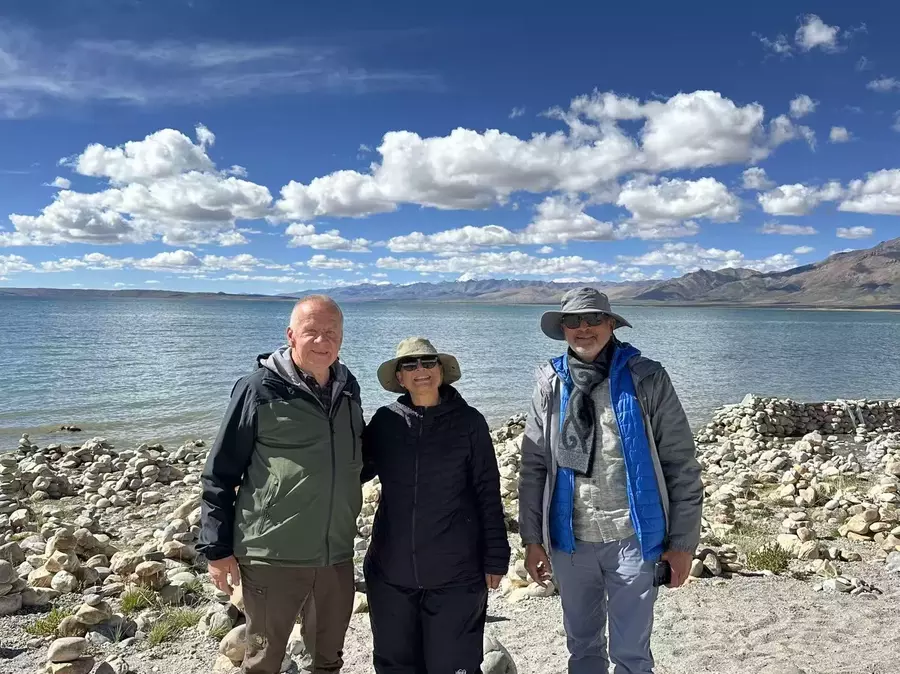
Recommended Itineraries
Based on your travel plan, budget, and physical condition, here are some classic and popular itineraries for your consideration:
1) Lhasa to Mount Kailash Overland (Classic Route)
This is the most iconic and popular route to Mount Kailash — an excellent choice for first-time visitors to Tibet. The journey begins in Lhasa and covers approximately 1,500 kilometers, passing through Shigatse, Everest Base Camp, Saga, and Lake Manasarovar, among other remarkable natural and cultural landmarks. This well-paced itinerary allows you to gradually acclimatize to the high altitude, significantly reducing the risk of altitude sickness, while immersing yourself in the breathtaking landscapes and profound spiritual heritage of Tibet.
At the sacred Lake Manasarovar, you may take part in a holy bath or even join a Puja. After completing the Kailash Parikrama, you have two return options: travel back to Lhasa and then fly to Germany via Beijing/Chengdu, or exit Tibet via the Gyirong/Zhangmu border into Kathmandu, and catch your return flight to Germany from there.
Estimated duration: 12–15 days.
√ 15 Days Lhasa Everest Kailash Group Tour
√ 12 Days Lhasa Everest Kailash Kathmandu Group Tour
2)Kathmandu to Mount Kailash by Land
For Deutschen entering Tibet via Nepal, Kathmandu serves as the ideal gateway. This route is direct and relatively straightforward, crossing into Tibet through the Gyirong/Zhangmu border and continuing through Saga and the sacred Lake Manasarovar, then reaching Darchen, the small town at the foot of Mt. Kailash. Here, you will begin your deeply spiritual Kailash Kora.
After completing the Kora, you may choose to: Return to Kathmandu via Saga, or extend your journey to visit EBC and Lhasa, immersing yourself further in Tibetan culture and exploring its most famous landmarks.
This route is perfect for those who wish to experience both Nepal and Tibet in one trip, or for travelers seeking a short yet meaningful adventure.
Estimated duration: 9–13 days.
√ 9 Days Kathmandu Kailash Kathmandu Tour
Best Time to Travel to Kailash
From late May to early October, the Mount Kailash region experiences its most pleasant weather, making it the best time for travel and trekking. While July and August bring occasional rain showers, the overall climate remains mild and comfortable. During this period, the weather is generally stable, rainfall is limited, and trekking conditions are both safer and more enjoyable.
However, the weather in the Kailash area can change quickly, so it’s important to bring suitable clothing and gear, and check the latest local forecasts before departure. In contrast, the winter months from November to March are extremely cold, with frequent snowfall, making trekking impractical. For up-to-date weather information, you’re welcome to contact us anytime.
The Saga Dawa Festival, which falls on the 15th day of the fourth month in the Tibetan calendar (usually falls in June of the solar calendar), is also an excellent time to undertake the Kailash Kora. On this sacred day, thousands of pilgrims gather at the base of Mount Kailash to commemorate Shakyamuni, the founder of Buddhism. If you wish to experience both the Kora and the deep spiritual atmosphere of a major Tibetan festival, this is an ideal time to go.
Required Documents for Mt.Kailash Trip
German citizens traveling to the Mount Kailash and Lake Manasarovar region must obtain the following documents: Tibet Travel Permit, Alien's Travel Permit, and Military Permit. These permits will be checked before boarding your flight or train to Tibet, as well as at hotels and major Tibetan tourist sites. To apply for it, please book with a licensed Tibet travel agency first, then send the scanned copies of your passport and Chinese visa to your Tibet travel agency at least 20 days before departure. Your agency will handle the entire application process on your behalf. The required visas vary depending on your route to Tibet.
Via Mainland China
If entering Tibet via mainland China, you will need to apply for a China visa to secure your Tibet permits. You can start online on the China Online Visa Application (COVA) and then make an interview arrangement at your nearby Chinese embassy, such as Berlin, Frankfurt, Hamburg, or Munich. If it requires further China travel info, you can reply to your Tibet travel agency for the China travel itinerary and invitation letter. Visa processing typically takes two weeks. One very important thing is that you should not mention Tibet when applying for your Chinese visa.
Via Nepal
If entering Tibet via Nepal, you will need to apply for a Chinese Group Visa, which requires an official invitation letter from the Tibet Tourism Bureau and your Tibet travel agency can handle this for you prior. With this invitation letter, your passport, and two passport-sized photos, you can apply for the group visa at the Chinese Embassy in Kathmandu. Visa processing typically takes three working days and requires five travelers to apply together.
Important Notice: German passport holders are now eligible for a 30-day visa-free stay in China till Dec 31, 2025. This exemption applies whether you enter Tibet from mainland China or Nepal.
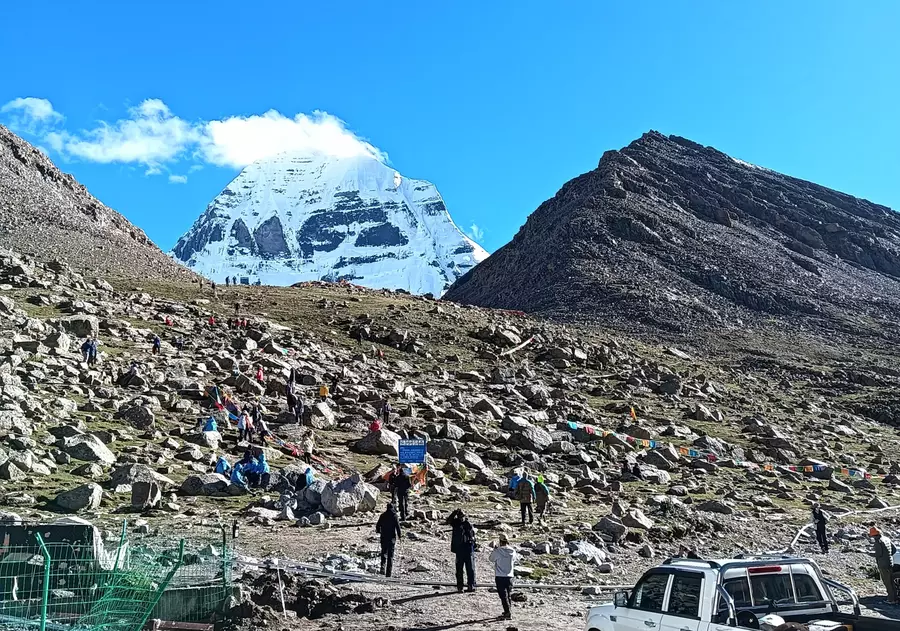
Essential Travel Preparations
Once your travel route is confirmed, the next step is to make essential preparations for the journey. Located in Tibet’s remote Ngari region, Mount Kailash presents challenging conditions and limited facilities, so careful planning in advance is crucial. Next, we will go over the essential details from three key aspects: Travel Costs, Accommodation and Meals, and the Packing List.
Travel Costs
The total cost of your journey can vary significantly depending on flights, accommodation standards, route, tour type (group or private), and travel season. Below is a general estimate for your reference.
Tour Cost: For a 12–15 day group tour, the average price is around €1,960–€2,100 per person.
If you prefer a single room, there is a single supplement of approximately €280–€410. For 1–2 travelers, joining a group is more cost-effective, while for four or more travelers, a private tour may be a better option. Please contact us for an exact quotation based on your travel dates and preferences.
Transportation: If you’re looking for budget-friendly flight options, the total cost for international flights plus the domestic flight to Lhasa is usually around €1,400–€1,600 per person.
Meals and Daily Expenses: Food in Tibet is generally more expensive than in mainland China, with meals costing about €4–€12 per person per meal.
Other Expenses: Costs for souvenirs, personal activities, and other extras vary depending on your individual spending habits.
Accommodation and Meals
In Lhasa and Shigatse, you can choose hotels from a range of 3, 4, and 5-star hotels, which offer comfortable accommodations. However, as you travel deeper into the Ngari region, lodging conditions become more basic, with most places providing simple guesthouses.
During the Mount Kailash Kora, both accommodation and meals are very simple and rudimentary. Travelers usually stay in guesthouses or small local lodges along the route. These are usually shared dormitory-style rooms (3–4 beds per room) with basic facilities. There are no private bathrooms, and travelers share a communal toilet. As showers are generally unavailable, it is recommended to bring wet wipes for personal hygiene.
In terms of food, Darchen serves as both the starting and ending point of the Kailash Kora, as well as the main supply station along the route. Small shops sell essentials such as instant noodles, bread, chocolate, and snacks. Along the trekking route, teahouses offer traditional Tibetan drinks like butter tea and sweet tea, as well as bottled water. Considering the high altitude and possible loss of appetite, it’s advisable to bring light, energy-rich snacks such as nuts, dried fruits, biscuits, chocolate, and compressed food bars to keep your energy levels up during the trek.
Health and Altitude Preparation
It is not recommended for individuals with cardiopulmonary insufficiency, severe anemia, pregnancy, young children, elderly travelers, or those who have recently recovered from major illness or surgery to travel to high-altitude regions. If you are in generally good health but have a history of mild hypertension or asthma, it is strongly advised to consult your doctor beforehand and carry necessary medication and emergency oxygen.
To better adapt to the altitude, plan your journey with a gradual ascent, spending time at lower-altitude areas such as Lhasa before heading to Mount Kailash. Upon arrival, avoid strenuous activity and greasy or spicy food, and refrain from bathing on the first day.
If you experience severe or persistent symptoms of altitude sickness, such as persistent headache, vomiting, or confusion, descend immediately to a lower altitude and seek professional medical assistance.
For your financial and health protection, it is highly recommended to purchase medical insurance and travel insurance that includes high-altitude coverage before departure.
Packing List
Due to the high altitude and unpredictable weather around Mount Kailash, it’s essential to pack carefully and choose suitable gear. Below are some packing recommendations to help you travel light while staying safe and comfortable during your trek.
Clothing
- Comfortable sports or trekking shoes.
- Trekking pants.
- Moisture-wicking thermal underwear, a windproof, waterproof outer jacket.
- Hat for sun protection.
- Gloves and a scarf to keep warm in cold weather.
Gear
- Sleeping bag: Accommodation along the trekking route is very basic.
- Backpack: Choose one that can hold all essential items. If you have extra luggage, you may hire a yak or porter to help carry it.
- Rain gear: Include a raincoat and a waterproof jacket to handle sudden rain showers.
- Trekking poles.
- Sun protection: Sunglasses, sunscreen to protect your skin from strong UV rays.
- Personal toiletries: Toothbrush, toothpaste, soap, wet wipes, shampoo, toilet paper, and towels.
- Medication: Bring essentials such as band-aids, painkillers, cold medicine, anti-diarrhea tablets, allergy medicine, and altitude sickness medication.
- Documents and cash: Carry your valid identification and keep some spare cash, as ATMs are not available in remote areas.
Conclusion
Planning a journey from Germany to Mount Kailash may seem complex, but with proper preparation, it promises to be a truly rewarding adventure. From flights, visas, and Tibet permits to altitude acclimatization and packing essentials, every step plays an important role in ensuring a smooth and fulfilling trip.
No matter the route you take to reach Tibet, the ultimate purpose remains the same — to follow in the footsteps of countless pilgrims, to witness the grandeur of the Himalayas, and to connect with the sacred land revered as the spiritual heart of the world. Let Mount Kailash be more than just a destination — let it be a journey of the soul and a profound cultural experience.
Email response within 0.5~24 hours.


